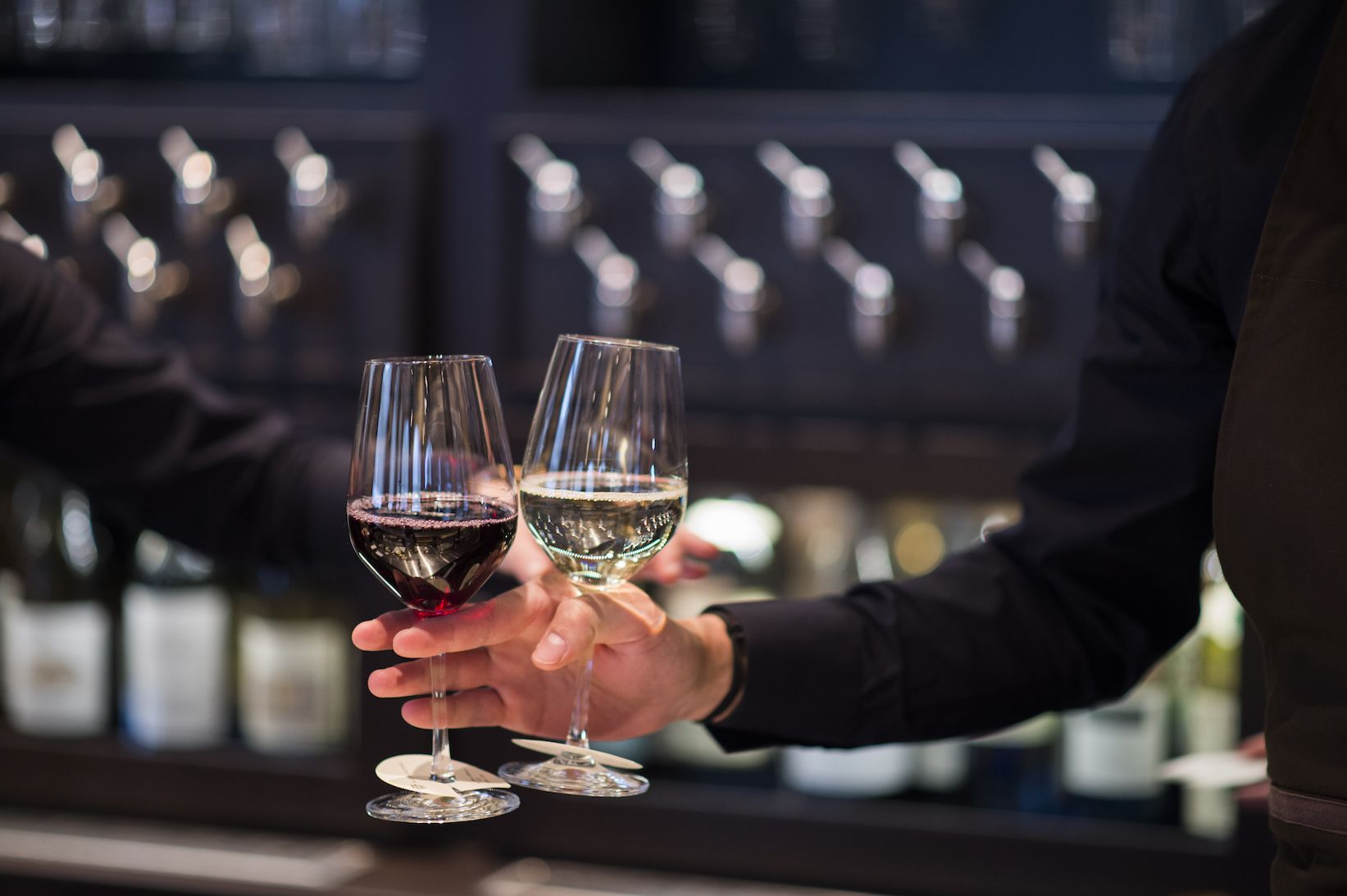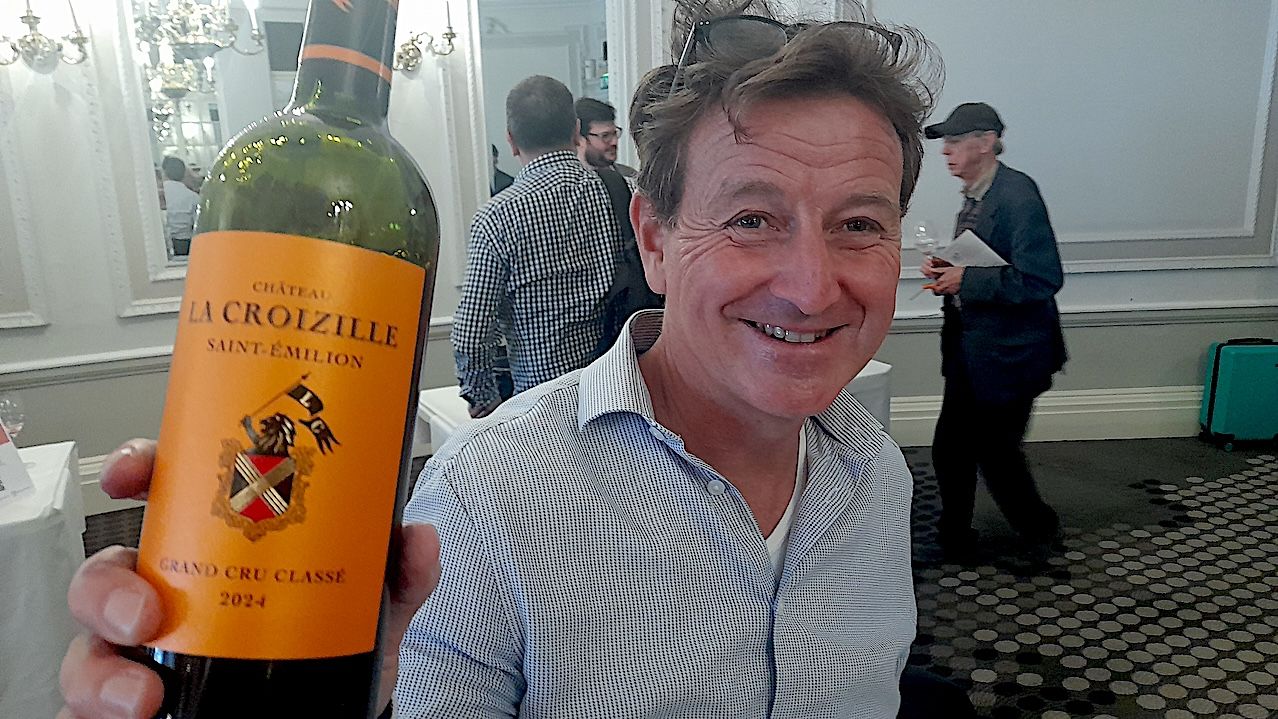Which are the wines on the novel menu at Les 110 de Taillevent? and how did the sommelier go off-piste. A fascinating read but look away if you’re feeling hungry.
For even the savviest of wine-drinkers, choosing a wine for a group dining out can be an onerous task. Having to satisfy a variety of personal tastes, menu selections, budgets, and levels of wine knowledge can often lead to safe, tried-and-tested, affordable options.
But, all this is rapidly becoming a thing of the past. Since the recent advent of Coravin and other wine-preserving systems, by-the-glass wine menus are becoming as exciting and important as their counterpart bill of fare.
Nowhere is this more in evidence than at Les 110 de Taillevent, the two brasserie-style satellites of the legendary mothership, Le Taillevent restaurant in Paris.
With one of the world’s greatest wine cellars at their disposal, the group’s owners, Gardinier et Fils saw an opportunity to open up their premium wine list to a wider audience by offering fine wines, by the glass, with and without menu pairings.
With Coravin (for whom the group works as an agent and hosted its UK product launch), the idea became viable and Les 110 de Taillevent were born (the first opening in Paris in 2012 and the second in London in 2015), the 110 denoting the number of different fine wines offered by the glass.*
Peter Dean and I were invited to review the new spring set menu with wine pairings on our first visit to the London outpost, housed in a former bank on the corner of Cavendish Square and Harley Street.

The decor is grown-up – high ceilings, with a glossy, dark, but warm, up-scale, metropolitan vibe. The expansive wine bar is placed squarely and prominently at the far end of the main dining space, subtly and tantalisingly lit to showcase the 110 bottles the moment you enter. (Next time I come, I intend to sit here.) On this occasion, the dining room was not full but the diners (notably including two groups of French, one of which was audibly excited about the wine pairings – ‘vraiment remarquable!’) were comfortably spread among the closely spaced tables.
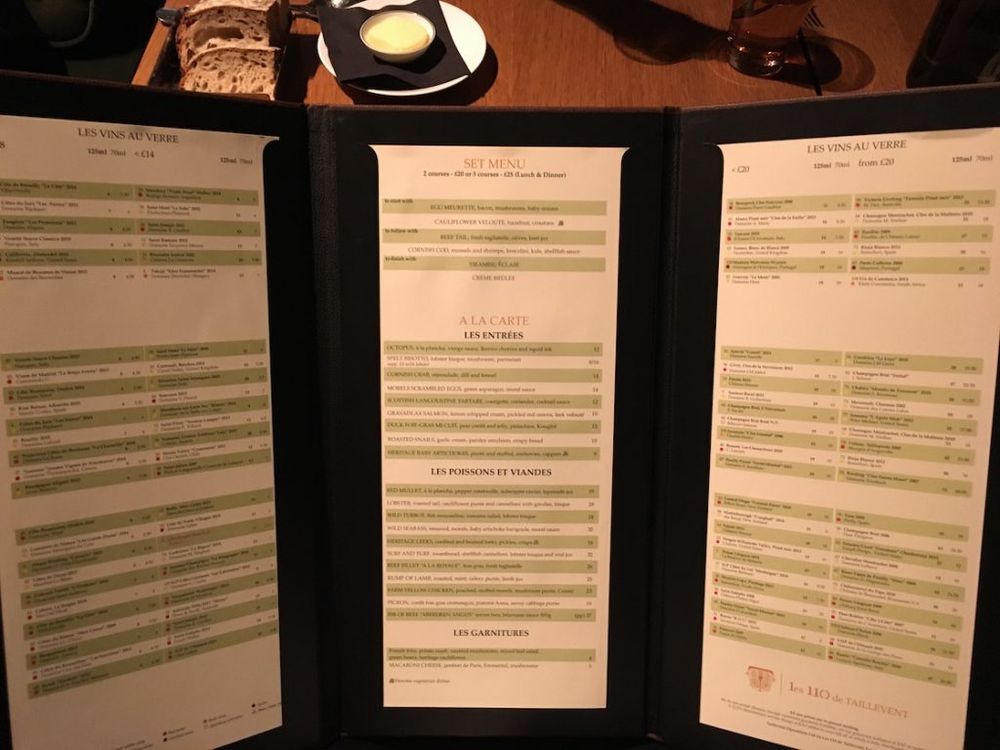
That unique menu with the food in the middle and two wine pairings either side for different tastes and budgets
The well-designed menus were presented and explained to us – food options in the centre, with two suggested corresponding wine pairings per dish (left for lower-priced recommendations, from £3.50 to £13 in 70 ml or 125ml measures, and right for more expensive options, from £7.50 to £33).
Still cooing over the options (Chassagne Montrachet, Clos de la Maltroie 2010. Domaine M Niellon, par example), we were approached unbidden by a man bearing two glasses of Champagne Brut NV, Thiénot. This turned out to be Nicola Munari, the affable Italian managing director of Les 110 de Taillevent, London, who remained on-hand to answer our questions and to lead us occasionally off-piste so that we could appreciate the full might of the cent dix selection.
The gougère amuse bouche went down a treat with the champagne before we got into the menu proper. The sommelier chose a Rully, le Meix Cadot 2013 from Domaine Dureuil Janthial (£7/£13) to go with my cauliflower velouté with hazelnuts and croutons. The raised acidity of the wine cut well through the dense, creaminess of the velouté…
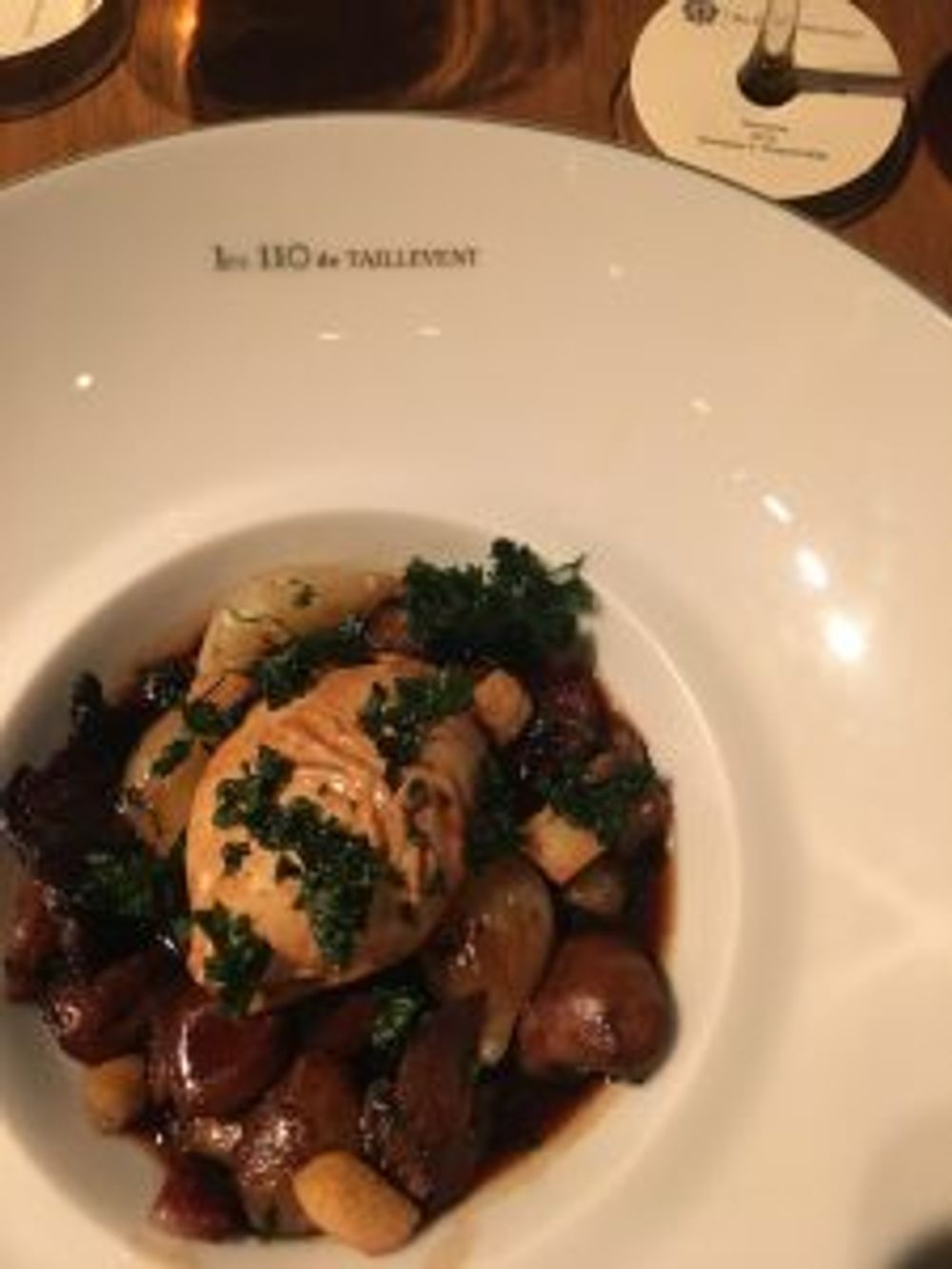
Peter’s traditional Egg Meurette came with a Sancerre Domaine V Pinard 2013 (£7/£13) that was not easily recognisable as a Pinot Noir and did not, we agreed, make much of an impression on the robust flavours of the bacon, mushroom and onion.
My main course, an oxtail with fresh tagliatelle, olives and beef jus was a winner, the rich, glossy sauce living up to its promise. A big, earthy dish needed big wine flavours to match and the Saint-Joseph 2012 from Domaine A Graillot (£7/£13) gave a good account of itself.
But, when Nicola reappeared with a VDP de l’Herault 2010, Grange des Pères (£18/£33), the contest was over. This was by far the star of the night for us both. More refined and altogether more sophisticated than the Saint-Joseph, it’s easy to see why it was on the right-hand side of the menu.
Peter’s main course of Cornish Cod with mussels, shrimps, brocolini, crispy kale and shellfish sauce was tasty, if a little insubstantial. The menu pairing of a Saint-Romain 2012 Domaine Taupenot-Merme (£7/£13) was fair but again, Nicola’s alternative suggestion, a Blanc Fumé de Pouilly “Silex” 2009 from Domaine D Dagueneau (£25.50/£43) showed its pedigree.
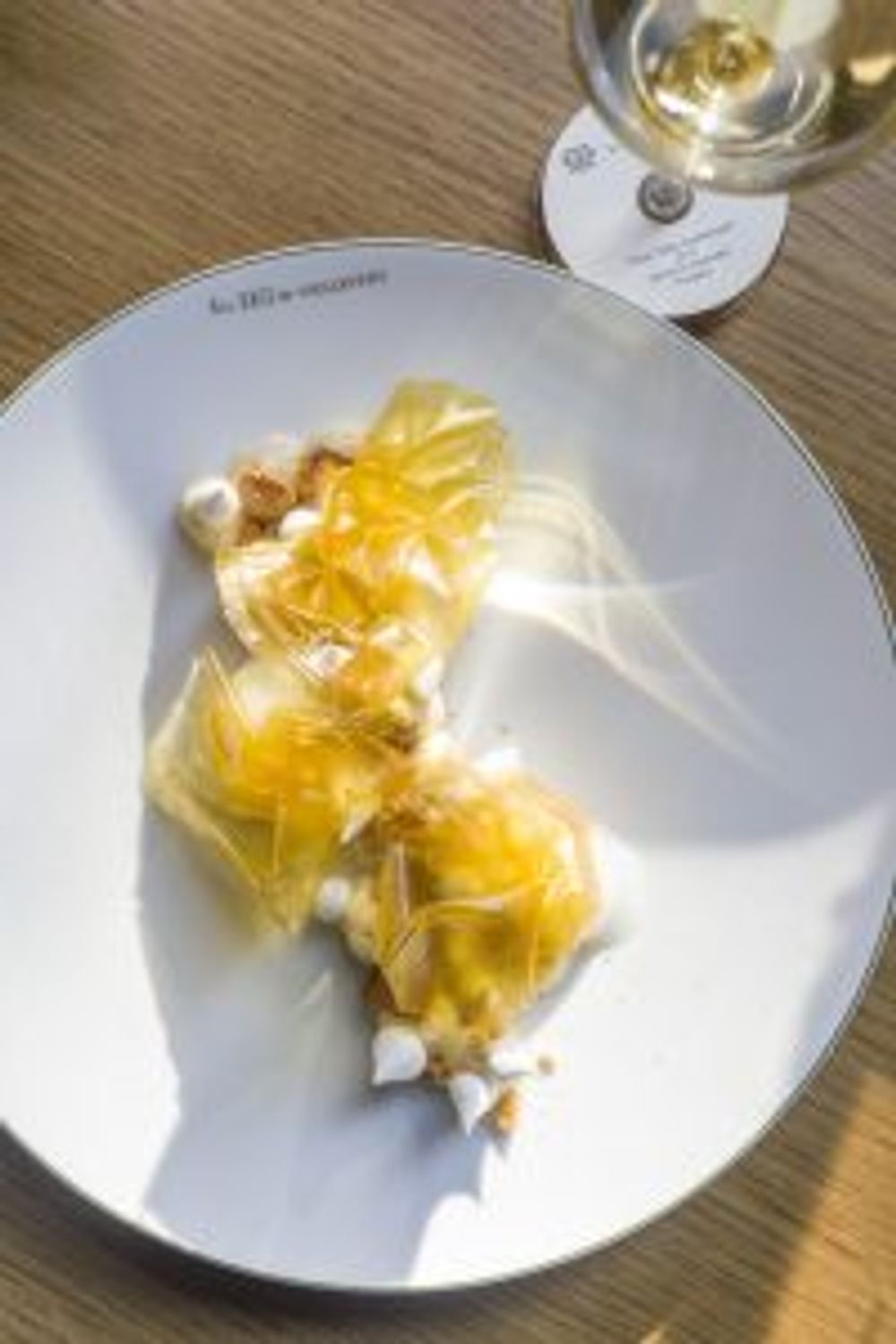
The chef prepared us an extra pre-dessert to give us a taster of some of the restaurant’s most popular sweet dishes, Tequila Lime Sorbet which was a combination of coconut, mousse and sorbet, poached pineapple and an exotic fruit coulis with a chocolate dome. With this, Nicola brought us a glass of Moscati d’Asti 2015, GD Vajra from Piemonte (£4/£7).
An inspired choice, it perfectly complemented the passion fruit flavours of the dessert. It also had special currency for us as we had visited the winemakers, a delightful, tight-knit family business, many years ago and been charmed by them and their wines.
Our desserts from the set menu were Crème Brûlée, a model dish with just the right colour and crunch on top, was matched with a Hungarian Tokaji “Edes Szamorodni” 2013 from Domaine Disznókö (£7/£13). Peter’s Tiramisu Éclair was served with a Californian Zinfandel 2012 from Kendall Jackson (£4.40/£8) which was an inspired choice and really highlighted the savoury coffee notes of the dessert.
The set menus (a fabulous value £20 for 2-course and £25 for 3-course) are available at both lunch and dinner, a point worth noting. For those wanting something a little more celebratory, the à la carte menu delivers a full range of French brasserie classics, 10 starters (£8-£16) and 11 main courses, from £16 to £37 for the Rib of Aberdeen Angus Beef. And of course you can always take a seat at the bar just for a glass of fine wine, or two.
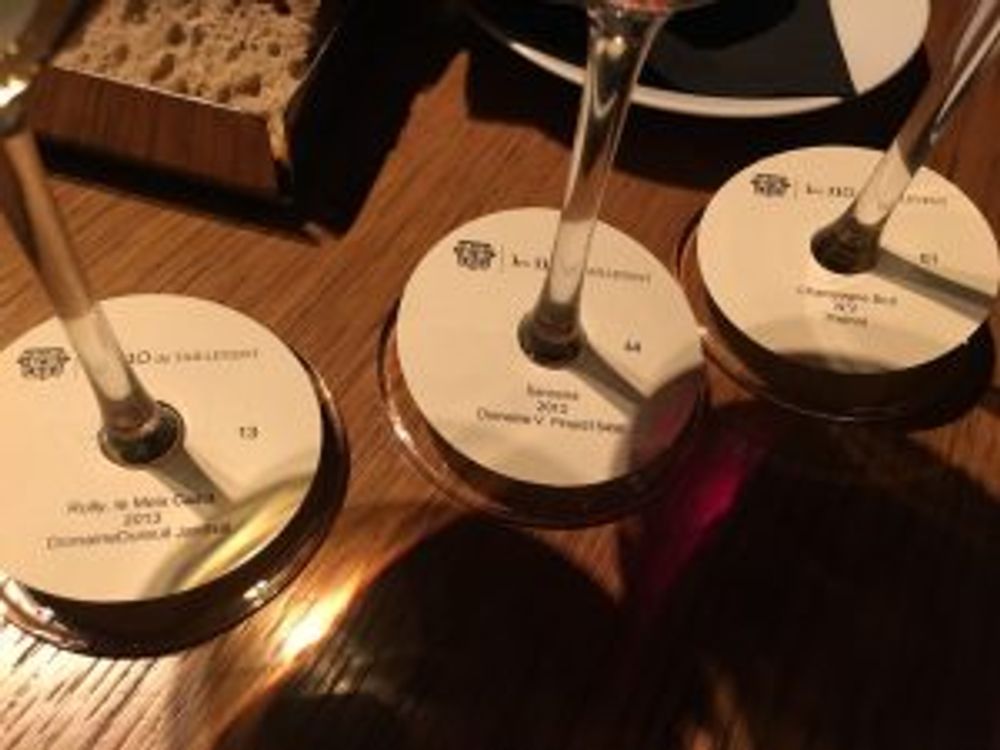
A well thought-out touch is the labels supplied with every glass of wine. If you’re tasting a number of wines at a time, this is incredibly helpful. Not only does it stop you losing track of what’s what, but you can take them away with you for reference. I wish all tastings could be done this way.
I will definitely be back next time I am in the vicinity. For shopping in Oxford Street, or a value business lunch, it’s a good choice for affordable French classics, and that little extra cheeky glass of something special.
As for the restaurant’s main selling point – the wines by the glass concept – it really worked. All of the wines were drinking perfectly, at the right age and in the right condition. And great to have the option of going for something either more entry level or something very special – first growths and collectors wines are all there ready to be sampled
* The original restaurant was named after Guillaume Tirel, (b.1312), nicknamed Taillevent, literally meaning ‘cut wind’, French for a light sailing jib, in reference to his very large, pronounced, aquiline nose. Generally considered one of the first truly professional master chefs, he wrote Le Viandier, a famous book on cookery which is widely held up as the establishment of the French gastronomic tradition.
